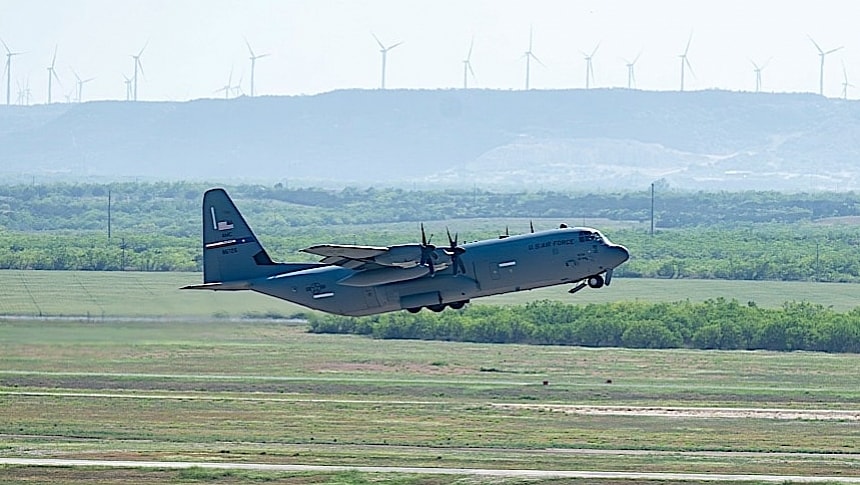External fuel tanks, or drop tanks as they are sometimes called, are common in military aviation. Dating back to 1923, when the pilots of the Spanish Civil War used them to extend the range of their airplanes, external fuel tanks have become must-have for fighter planes. They are, however, almost non-existent on transport aircraft. Or should I say "were," as the U.S. Air Force changed all that.
You all know the C-130J Super Hercules. It is the most recent variant of the C-130 Hercules and at the same time one of the largest examples of the family: it can transport tons of supplies to distances of up to 3,000 miles (4,828 km), all while using a minimal crew of two pilots and a loadmaster.
The plane is a design by Lockheed Martin, and to date over 450 of them have been delivered to global operators. It is an example fielded by the 40th Airlift Squadron (317th Airlift Wing) that makes the headlines now, thanks to a "significant milestone" reached earlier in April.
The plane, flown for a special mission of the Max Endurance Operation (MEO) variety, managed to become the first one in the history of America's Air Mobility Command to fly with external fuel tanks attached. The accomplishment comes on the heels of tests that started last year.
The mission was not very encouragingly called Hazard Leap and required the plane to fly from an undisclosed location in the United States to the Andersen Air Force Base in Guam. The USAF does not say what distance that translates into, but we're told the fitting of the external fuel tanks allowed the plane to land only once for refueling, in Hawaii.
That's exactly what the profile of an MEO mission calls for, but for the crews to be able to pull off the stunt careful planning of the flight route, down to knowing the wind patterns and planning for storms, was required.
The extra fuel tanks are said to have given the Super Hercules an extra 17,000 pounds of fuel (7,700 liters), which was transformed by the plane's pilots into an extra four hours spent in the air.
The USAF needs this capability as it may soon have to deploy fast in the Indo-Pacific area, given the challenges present there. Before it gets to use the external tanks configuration in the real world, America's pilots will once again put it to the test in somewhat more controlled environment.
The 317th Airlift Wing is presently taking part Exercise Hazard Spear, which will close on May 4, and Balikatan 2024 ending on May 8.
The USAF does not say how much of a common practice using external fuel tanks on transport planes might become, but that depends greatly on the missions to be performed.
The plane is a design by Lockheed Martin, and to date over 450 of them have been delivered to global operators. It is an example fielded by the 40th Airlift Squadron (317th Airlift Wing) that makes the headlines now, thanks to a "significant milestone" reached earlier in April.
The plane, flown for a special mission of the Max Endurance Operation (MEO) variety, managed to become the first one in the history of America's Air Mobility Command to fly with external fuel tanks attached. The accomplishment comes on the heels of tests that started last year.
The mission was not very encouragingly called Hazard Leap and required the plane to fly from an undisclosed location in the United States to the Andersen Air Force Base in Guam. The USAF does not say what distance that translates into, but we're told the fitting of the external fuel tanks allowed the plane to land only once for refueling, in Hawaii.
That's exactly what the profile of an MEO mission calls for, but for the crews to be able to pull off the stunt careful planning of the flight route, down to knowing the wind patterns and planning for storms, was required.
The extra fuel tanks are said to have given the Super Hercules an extra 17,000 pounds of fuel (7,700 liters), which was transformed by the plane's pilots into an extra four hours spent in the air.
The USAF needs this capability as it may soon have to deploy fast in the Indo-Pacific area, given the challenges present there. Before it gets to use the external tanks configuration in the real world, America's pilots will once again put it to the test in somewhat more controlled environment.
The 317th Airlift Wing is presently taking part Exercise Hazard Spear, which will close on May 4, and Balikatan 2024 ending on May 8.
The USAF does not say how much of a common practice using external fuel tanks on transport planes might become, but that depends greatly on the missions to be performed.




























